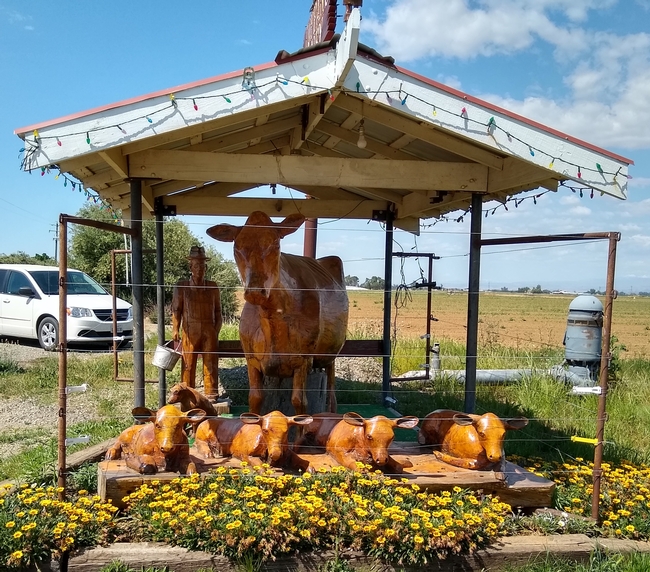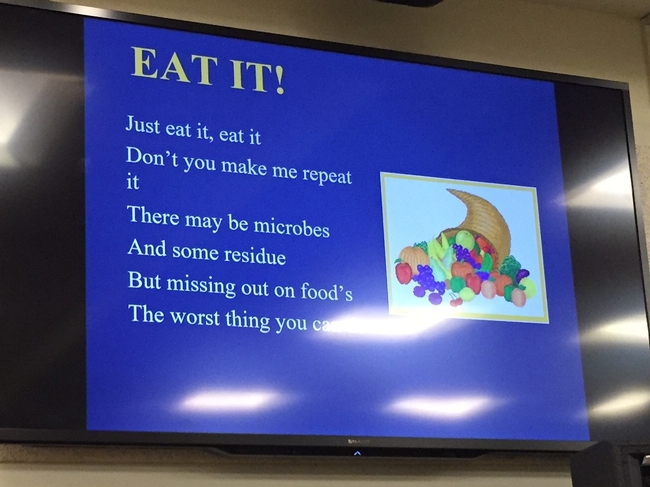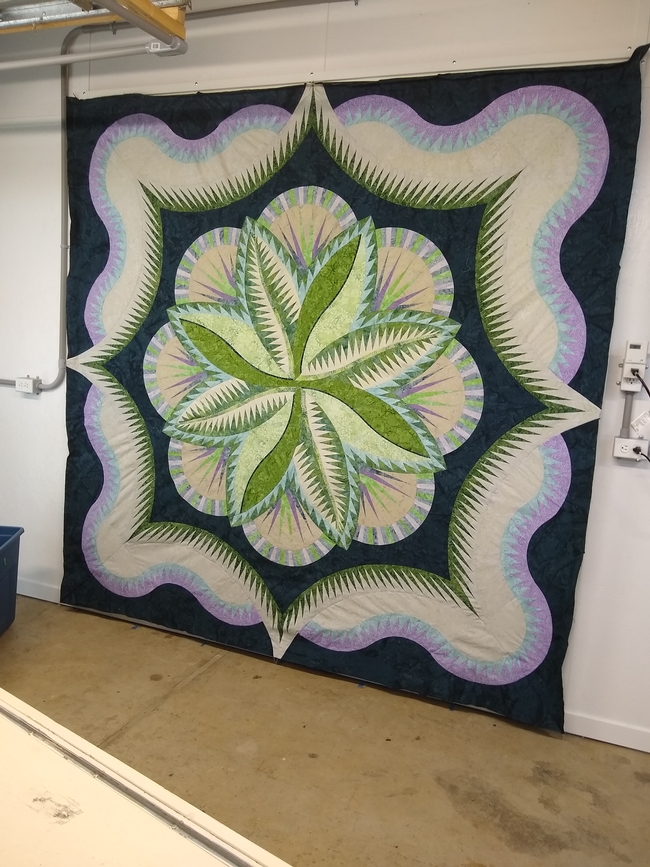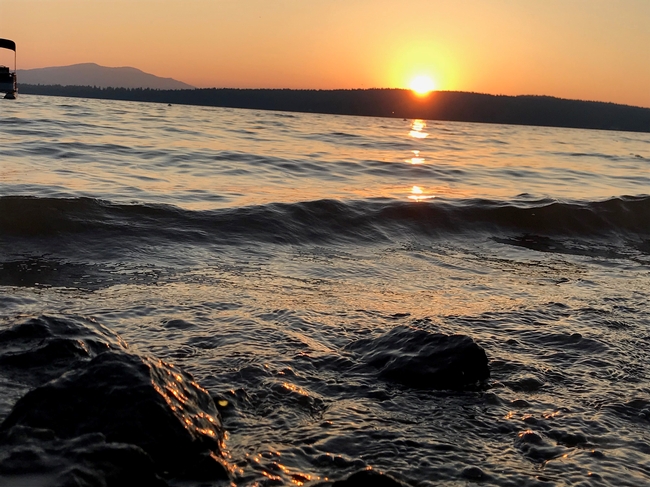- Author: Wendy Powers
I mentioned that I am getting ready to go on vacation. Because of my pending absence, my calendar is packed this week and I have many things that must be completed well before the business day starts or long into the evening. But, there's an opportunity in this in that if the pace keeps up, I am guaranteed good sleep on my flight to vacationland.
During Program Council this week we spent much of our time discussing our vision of community and how reimagining community could better position us to have a positive impact on every Californian. The topic is uncomfortable at times however, I find it energizing when I view the conversation through the lens of incredible ‘opportunity' rather than the lens of ‘giving something up'. Members of PC helped me stay focused on the opportunity and recognize that we can choose to be an agile organization because we have amazing, talented people everywhere throughout the division. These people, all of us, can choose to be agile. Imagine the possibilities if we all chose to see the opportunity and pivot in a direction that guides to greater impact – the results would be truly remarkable! The conversation left me tired, but that, too, contributes to my opportunity for good sleep later this week.
The conversations reminded me of a TED talk I had listened to some time ago. The speaker said, “If you get the environment right, every one of us has the capacity to achieve remarkable things”. I completely buy into this idea, particularly after 3 years of getting to know the people that are UC ANR. The speaker went on to talk about the elements that get an organization or a marine troop past the danger: trust and cooperation. At one point in the PC discussion we questioned ‘how do we make this happen' and, not surprisingly, that's where we get a bit stuck. Building trust has its own set of challenges and efforts needed. Cooperation is a different story; we often cooperate on projects but that cooperation is contingent on a shared vision or goals. In a large organization with many moving parts and layers upon layers of complexity, while (I hope) we all want to achieve that big goal of improving life for every Californian, I suspect it is difficult for everyone to see the picture from the same angle. As a result, like a hologram, people see very different things making even what one considers ‘danger' inconsistent. I need to think more about this.
Two busy days to go this week but already I have been 1) challenged by something, and 2) learned something. Now I need to focus on 3) helping someone in order to complete my checklist. Surely there's an opportunity somewhere. Perhaps at Open Office that starts in 20 minutes.
- Author: Wendy Powers
We had a good conversation during Tuesday's Academic Assembly Council. There was a long list of topics, but we were able to work through the list in the 2 hours we had. Honestly, we could have spent far more time on issues such as expectations of the different academic ranks, future hiring of academics, the importance and challenge of everyone hearing the same message across a large, dispersed organization, the merit and promotion process and time it takes to conduct the process each year, and feedback from across the academic assembly.
Program Council met at the Hopland REC, beginning Tuesday evening for dinner. Wednesday included an overview of the REC, a small slice of the vital work conducted there over the years, and a look at the plans, including opportunities that have resulted from the devastation of the fire. John did a great job with the presentation. We took a walking tour of the lower area of the REC which was very popular with participants. Program Council did have work to do; we spent time talking about what members saw as opportunities for the RECs.
Following Program Council, we headed to Lake County to have dinner with Rachel and Glenn. Thursday started with a good discussion in Lake County. I was surprised, in a good way, to learn that the local Tribal Health has doctors who prescribe Master Gardener classes as part of the diabetes prevention program. That's a powerful statement about the contribution of UC ANR programs to overall health and an excellent justification for working with counties to find support for our programs through Prop 63 funds that are grounded in improving mental health. We learned about how vital UC ANR programs are to a County of 65,000 people with little infrastructure and staggering statistics about the health and well-being of the County residents. UC ANR accomplishes its work through key partnerships. It was a story we had heard before, in other counties across the state.

We went on to Glenn County and learned about the great things going on there; we met a farm family that benefits from some of the work of UC ANR CE Advisors. Now we have a team of Community Educators to advance similar work. There is significant research going on in Glenn County that helps farmers and families, alike, address business and personal challenges.
During the week we learned of the Governor's new budget. UCOP remains flat. It is difficult to hear the news, given the evidence of how vital our work is to the people of California. We need to continue to share our stories, gathering more of them with more concrete impact data. While I am disappointed in the budget outcome, we are by no means defeated. Tomorrow starts another week with its own set of setbacks that don't even come close to competing with all of the successes.
- Author: Wendy Powers
My allergies are controlling me, again. I don't have any travel over the next 2 weeks so no reprieve in the short term. At least the heavy lift of yard work is done for a bit. And, I am down to 6 dossiers remaining for first review. I hope to knock out 1 or 2 of those today.
In the meantime, I've finished a project I had worked on for a while. As I've mentioned before, it would be an exaggeration to say that I enjoyed the project. But truth be told, given the outcome, I suspect I will undertake such a project again. Had the outcome not justified the means, I would not but, in this case, the toil was worthwhile. The process was new to me, contributing to both the excitement of a challenge and the frustration over having to read the instructions, repeatedly. However, the challenge wasn't difficult; it was time-consuming and new. The process took some getting used to, but what ‘new process' doesn't? At times, it seemed that this new process was wasteful but when I measured the actual waste, it turned out to be quite low. I guess things that appear to be destined to fail may, in fact, work out okay in the end provided you follow the directions and see things through to the end. Anyway, now I am on to a new project that requires more creativity with no instructions. We'll see how it turns out.
Yesterday was all about the budget. Glenda, Tu, Jan and I met for a few hours to put final touches on our annual presentation to the President then strategize about goals and how best to achieve them. Later, Jennifer joined us to review a limited number of budget requests. Of course, without knowing anything definitive about our FY19/20 budget, no final decisions could be made. The realist in me can't overlook the fact that public education, in general, needs to become increasingly creative in how it finds funding going forward; just following last year's directions doesn't suffice. Regardless of where we sit in the OP budget today, and what conversations are going on around the state, the reality is that UC ANR can't maintain all that it has had in the past if it relies on state and federal funding sources to be the provider. That's not to say that we don't seek as much as we can from those sources; just that the funds don't have the purchasing power they once did.
Tomorrow I have a chance to visit with the Academic Assembly Council before heading off to Program Council that will be held at the Hopland REC. This might be the first time I have visited Hopland when it wasn't raining! Weather aside, it is always nice to see John, Hannah, and the Hopland team.
- Author: Wendy Powers
I stand corrected; only a couple of SI Leaders pulled together the information for the Federal report. Thanks go out to Cheryl Wilen, Doug Parker, Clare Gupta, Neil McRoberts, David Lile, Chris Greer, and Yana Valachovik for their work! I met with Katherine Webb-Martinez, and we talked about all the many uses for the information provided. It is exciting to think about the opportunities to share your stories and successes.
Now that Cheryl Wilen has rotated off serving as an SI Leader, I don't see her every month for Program Council. She made a special appearance this month to attend a musical performance by Carl Winter, following the Program Council meeting last Tuesday. Carl shared with the Davis ANR building some of his parodies that he developed as a novel method of teaching food safety principles to students. A few years ago, he was awarded a USDA competitive grant to create and deliver the songs. I suspect he may have been disappointed a bit in his stoic audience, but everyone enjoyed the performance and our opportunity to experience both his musical talent and his creativity. We can talk about Mark Bell's dancing in a different post.

Carl's demonstrated his creativity following a Program Council ideation activity. Program Council members worked in small teams to brainstorm ideas that would position UC ANR for the future. Then we slept on it and reconvened on Wednesday to share out our thoughts and think about ‘who would get behind the idea' and ‘what would make the idea work'? The goal wasn't to move forward with the ideas themselves but to get to the development of guiding principles for making decisions going forward. This would include program reviews and resource allocation decisions. It had been a while since the guiding principles had last been reviewed (2009, I think). Like many of the Program Council members, I left thinking as much about the ideas I heard and ‘what if' as I did thinking about the guiding principles. What sunk in with me was that any single idea might be a challenge to implement but the combination of several of the concepts, while identified independently, could come together and forge a path forward. The other thing that stuck out was that those ideas that were the most innovative tended to be the ones that would be the most difficult to implement, often due to internal or external resistance, reinforcing the sentiment that change is hard. Carl commented that one of the challenges he continues to face is that often colleagues don't see him as a serious scientist. And yet, his approach to teaching is not only evidence of his scholarship and creativity, but far more impactful as far as learning and behavior change adoption, than most peer-reviewed journal publications could ever achieve.

- Author: Wendy Powers
Program Council met on Wednesday. For those who were relaxing over the weekend and staring off into a lake, they were quickly pulled back to reality. We cancelled the Tuesday meeting, assuming we didn't have enough content to justify the day and a half. We ended up rushing to finish on time. It's difficult to judge, in advance, how much conversation a topic will generate. The first topic, alone, extended well beyond the allotted 45 min. It was about how to meet all of the needs within the constraints of limited resources. Messaging becomes key. I think it is human nature to feel unsupported when programs can't be supported at desired levels or even at levels they have been in the past (numbers of academics, support provided to REC research, travel and supply funds, grant programs, etc.). So how does one message sufficiently to overcome these feelings of abandonment? Is it even possible to message well enough or often enough, particularly when those impacted have already created their stories about the situation?
The next topic was work groups (WG), program teams (PT), and strategic initiatives (SI) and how best to support getting the work done in a way that promotes synergies and sharing, even across unexpected groups, in a manner that doesn't add layers of work to organizers or participants. Yet, at the same time, we need some record of accomplishment as a result of the efforts in order to convey the value of continuing. The SI Leaders polled the work group and program team leaders about their perceived value of WG, PT, and SI. As you can imagine, the responses were varied, indicating that each approach was everything from most important to least important. I imagine the same would be true if we polled the entire division on just about any topic – some would say the issue/program/investment should be our highest priority while others would rate it at the bottom. I'm not sure consensus is even possible for such a large, diverse, and dispersed organization.
Other topics included branding (should we be UC ANR or UCCE or perhaps represented by the well-recognized statewide programs) and strategies to increase entrepreneurialism in our programs. Overall, there was a bit of a theme throughout the day – that we can't please everyone and that it's difficult to message enough.
We also discussed the 2018 position call process and how to review the proposals during our October meeting. Between now and October, we all have some homework to do in reviewing the proposals. We anticipate having our recommendations ready following the November meeting. We will spend some time in November reviewing the process so, please, provide your ideas for improvement to any of the Program Council members. Your feedback is important to us.
And while we wrap up releasing the 2016 positions throughout the remainder of the calendar year, we have another outcome of that call to welcome to UC ANR. Jaspreet Sidhu started on Tuesday in Kern County as a Vegetable Crops Advisor. Please welcome Jaspreet!





